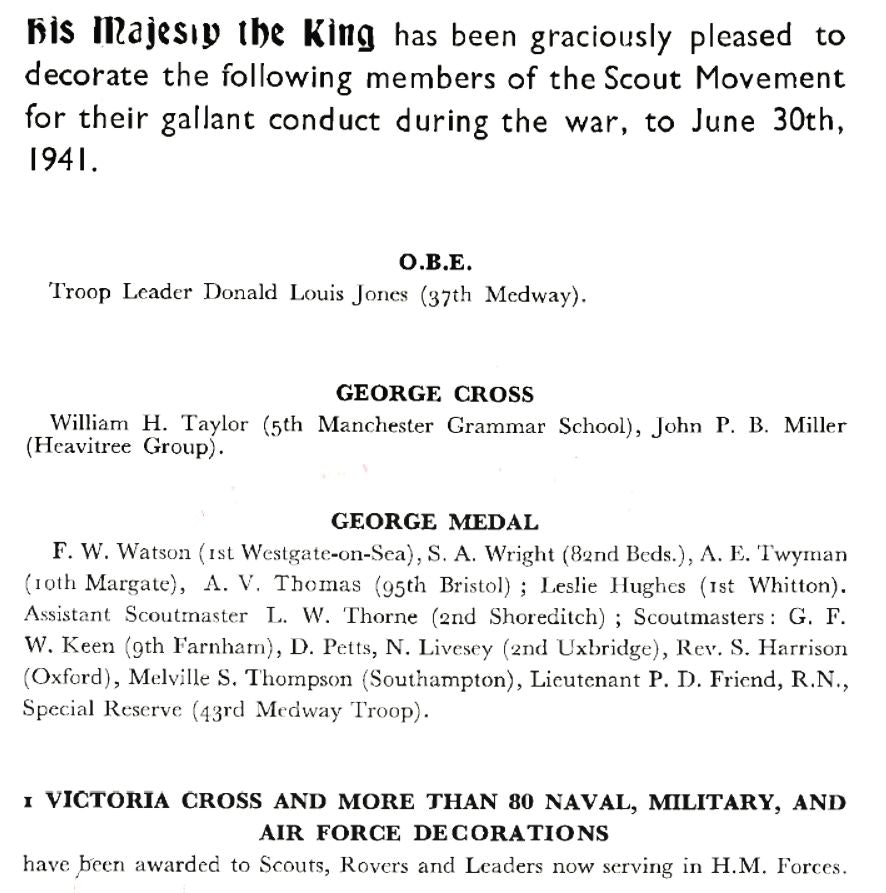At 4:30pm on 15th March, Manor Church in Galleywall Road, Bermondsey (Google Maps) was the venue for the presentation of Frank’s Bronze Cross medal to his mother and father, the award of which had been announced on 5th February 1941. It was presented by the Scout Commissioner for London, General Sir John Shea. Wikipedia.
Councillor George Henley, Mayor of Bermondsey
The Mayor of Bermondsey, Councillor George Henley (left of picture), attended. Less than two months later he was killed in an air raid on 11th May 1941. Henley drive, close to the location of the old Bermondsey Town Hall, was named after him. Google Maps Link.
The Medal Presentation
The emotion of the presentation is plain to see in the picture below. The picture caught the moment Frank’s mother, Alice, reached to receive the Bronze Cross medal in its presentation box from General Sir John Shea as Frank’s father, also called Frank, looked on. On Frank’s left lapel looks to be a Civil Defence badge.
At the same event, a number of other Scouts were also given awards.

Image Source: Scout Association Heritage Collection
Film of The Medal Presentation
The presentation was recorded by British Movietone and published on 20th March 1941. The clip starts a few seconds in after pressing play.
https://www.youtube.com/watch?v=FhbF9KgLpLw
Other Scouts Receiving Awards

Awards for Brave Bermondsey Scouts. Mass Presentation of Gallant Awards. The Presentations by General Sir John Shea, G.C.B., K.C.M.G., D.S.O., the Scout County Commissioner for London, at Manor Mission, Galleywall Road. Scouts who received the Silver Cross for outstanding bravery. Left to right Ernest Joseph Burgess, Cubmaster William C. Lench, Leonard (Nick) Murray, Charles Norris (Patrol Leader), George Francis Winmill and Eric Young being admired by some of the Cubs.
Picture: Mary Evans Picture library & Scout Archives
THE BRONZE CROSS
The Bronze Cross is the highest gallantry award the Scout Association can award and is known as “The Scout’s VC”, a reference to the well known Victoria Cross; the highest British Military Decoration.
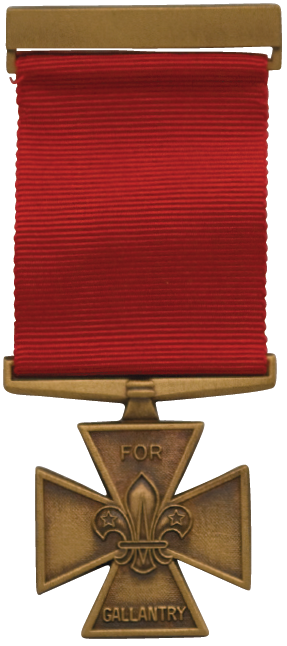
Image: Scout Association
Like other organisations, Scout awards are made against a set of criteria as shown in the extract from Policy, Organisation & Rules (POR) which contains everything the Scout Association members are governed by.
A recommendation would of been passed to the Awards Committee containing all the detail of his actions. Sadly, the original recommendation has been lost, only the commendation survives which is far more vague in detail.
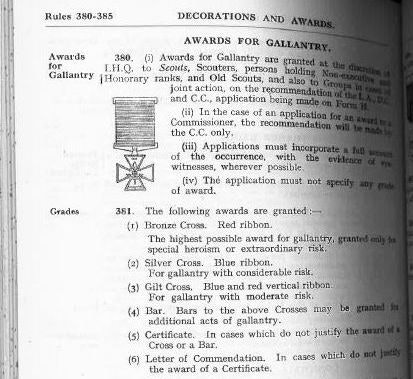
stipulating the requirements for the award of a Bronze Cross.
Image Source: Scout Association Heritage Collection
The Scout Booklet “They Were Prepared” (see earlier) published a list of Scout Association awards so far granted as of 30th June 1941. Although they didn’t know it then, in 1941 they were only a quarter of the way through the war. Bermondsey groups are a feature of the list.
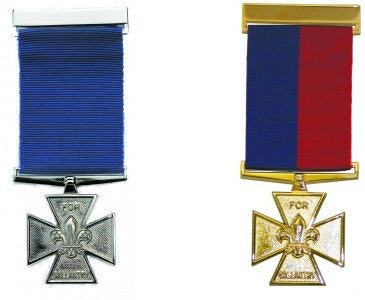
Image source: http://www.southlondonscouts.org.uk
In the same way that British military medals are graded, so are the Scout medals. So like a Victoria Cross is senior to a Conspicuous Gallantry Cross, so the Bronze Cross is senior to the Silver and Gilt Crosses.
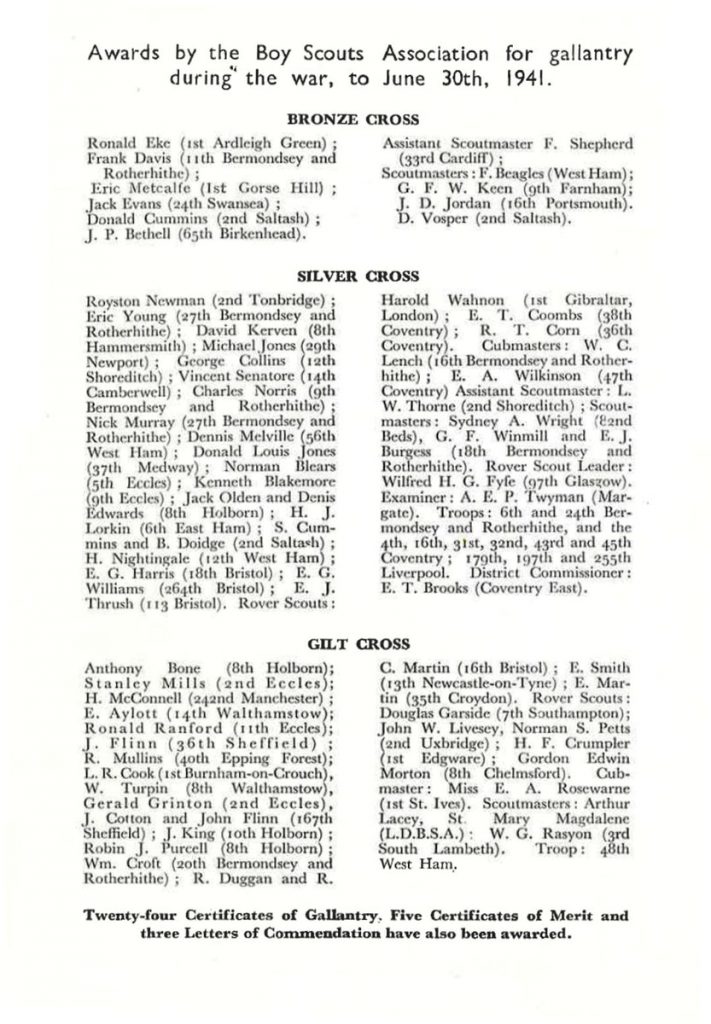
THE 1939-1945 DEFENCE MEDAL

The Defence Medal was awarded to those not in direct combat during World War Two, but who made a contribution to the defence of the United Kingdom at home or overseas. It was created in May 1945 to be awarded to the military and workers in the listed civilian occupations.
The medal ribbon is flame red bordered by green to signify the enemy’s attacks and destruction wrought on the green and pleasant land with the thin black stripes signifying the black out when no lights could shine outside at night for fear of guiding enemy bombers.
Greatly paraphrasing the criteria for awarding the Defence Medal, Scouts like Frank were entitled to the World War Two Defence medal if they met the following criteria (rules):
- Civil Defence service in non-operational areas subjected to air attack
- Completed three years of service between 1939 and 1945
- If service was brought to an end before the period of three years service has been completed, either by death due to enemy action when on duty, or by injuries entitling the candidate to a Wound Stripe
“One thing which always pleased me was the cheery, scouting way in which they tackled everything, and that despite bombs and flying-bombs or rockets, scouting in Bermondsey and Rotherhithe never stopped. Sometimes meetings had to be held in shelters, etc., but we kept our Scouting going. I was very proud of that.”
Mr H.K. Wiggell, Albany (Southwark) Scout District Commissioner
The circle with a dot is the tracking sign for “Gone Home” and is on Robert Baden Powell’s grave in Kenya. Baden-Powell, or BP, found the Scout movement and was the first, and only, Chief Scout of the World. “Gone Home” is used to signify a member of the Scout movement who has died.

The leaflet “They Were Prepared” also listed British decorations members of the Scout Association had received as of 30th June 1941.
